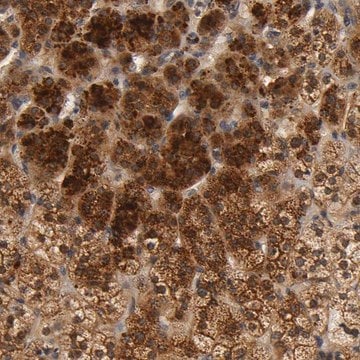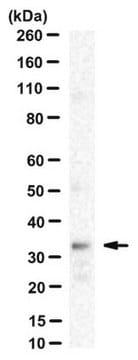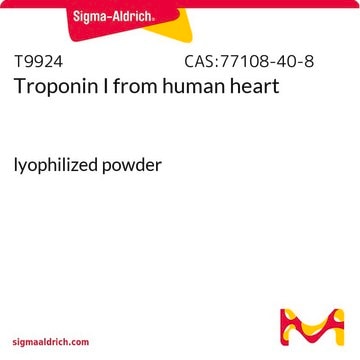MABS1249
Anti-SCAP Antibody, clone 9D5
clone 9D5, from mouse
Synonyme(s) :
Sterol regulatory element-binding protein cleavage-activating protein, SCAP, SREBP cleavage-activating protein
About This Item
Produits recommandés
Source biologique
mouse
Niveau de qualité
Forme d'anticorps
purified immunoglobulin
Type de produit anticorps
primary antibodies
Clone
9D5, monoclonal
Espèces réactives
hamster
Technique(s)
immunocytochemistry: suitable
western blot: suitable
Isotype
IgG2bκ
Numéro d'accès NCBI
Numéro d'accès UniProt
Modification post-traductionnelle de la cible
unmodified
Informations sur le gène
hamster ... Scap(100689048)
Description générale
4 lumenal and 5 cytoplasmic regions, having both its N- and C-terminal ends at the cytoplasmic side (a.a. 1-18 & 730-1276). The C-terminal domain of SCAP mediates association with SREBPs, while transmembrane helices 2–6 comprise the sterol-sensing domain that mediates sterol-induced binding of SCAP to Insigs. Mutations within the sterol-sensing region disrupt Insig binding and prevent sterol-mediated ER retention of SCAP-SREBP.
Spécificité
Immunogène
Application
Western Blotting Analysis: A representative lot detected exogenously expressed SCAP co-immunoprecipitated with the exogenously expressed Insig-1 and Insig-2 upon 25-hydroxycholesterol (25-HC) treatment of a SCAP-deficient CHO cell line SRD-13A that had been transfected to co-express SCAP with either myc-tagged Insig-1 or Insig-2 (Lee, P.C., and DeBose-Boyd, R.A. (2010). J. Lipid Res. 51(1):192-201).
Western Blotting Analysis: Representative lots detected similar level of SCAP in the membrane extracts from CHO cells with or without SREBP processing inhibitor 25-hydroxycholesterol (25-HC) treatment regardless whether the cells′ 25-HC-resistant status (Lee, P.C., and DeBose-Boyd, R.A. (2010). J. Lipid Res. 51(1):192-201; Lee, P.C., et al. (2007). J. Lipid Res. 48(9):1944-1954).
Western Blotting Analysis: A representative lot detected the endogenous SCAP immunoprecipitated from CHO cell lysate by a polyclonal SCAP antibody (Sakai, J., et al. (1997). J. Biol. Chem. 272(32):20213-20221).
Immunocytochemistry Analysis: A representative lot localized the overexpressed hamster SCAP at ER and nuclear envelope by fluorescent immunocytochemistry staining of 3% paraformaldehyde-fixed, 0.01% saponin-permeabilized CHO stable transfectants (Sakai, J., et al. (1997). J. Biol. Chem. 272(32):20213-20221).
Qualité
Isotyping Analysis: The identity of this monoclonal antibody is confirmed by isotyping test to be IgG2bκ.
Description de la cible
Forme physique
Autres remarques
Not finding the right product?
Try our Outil de sélection de produits.
Code de la classe de stockage
12 - Non Combustible Liquids
Classe de danger pour l'eau (WGK)
WGK 1
Point d'éclair (°F)
Not applicable
Point d'éclair (°C)
Not applicable
Certificats d'analyse (COA)
Recherchez un Certificats d'analyse (COA) en saisissant le numéro de lot du produit. Les numéros de lot figurent sur l'étiquette du produit après les mots "Lot" ou "Batch".
Déjà en possession de ce produit ?
Retrouvez la documentation relative aux produits que vous avez récemment achetés dans la Bibliothèque de documents.
Notre équipe de scientifiques dispose d'une expérience dans tous les secteurs de la recherche, notamment en sciences de la vie, science des matériaux, synthèse chimique, chromatographie, analyse et dans de nombreux autres domaines..
Contacter notre Service technique








